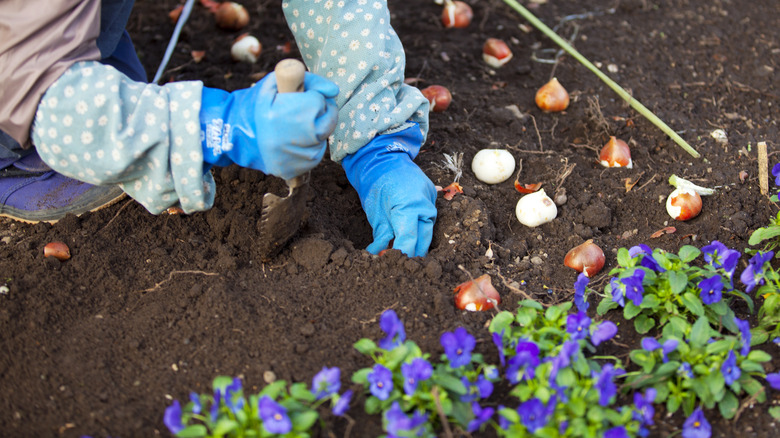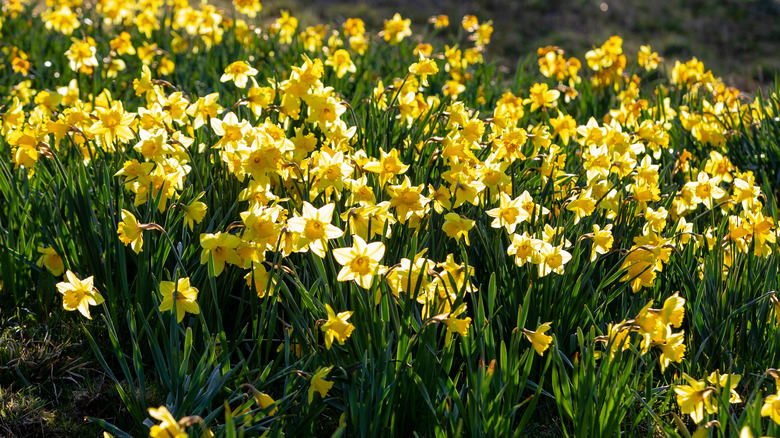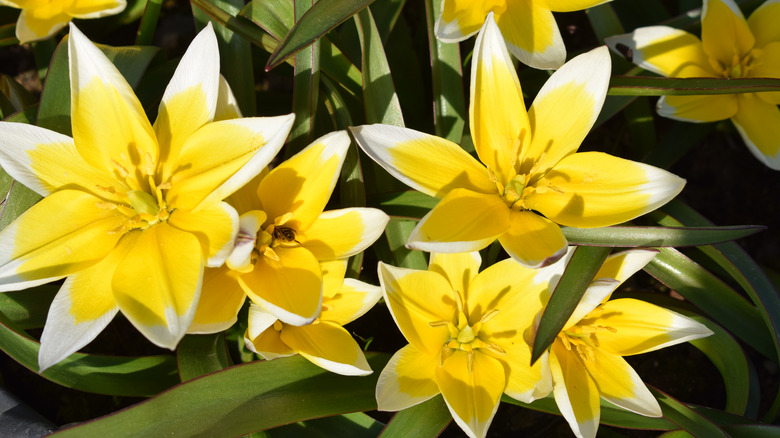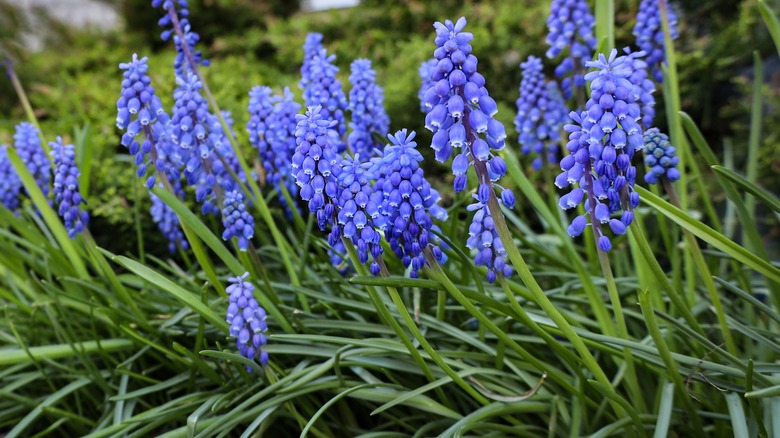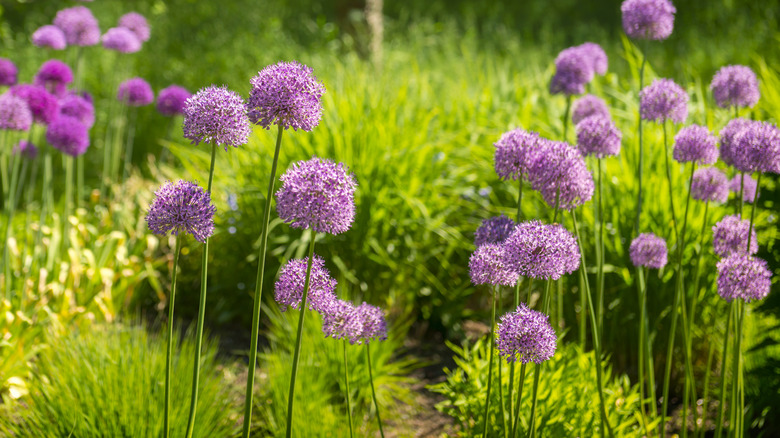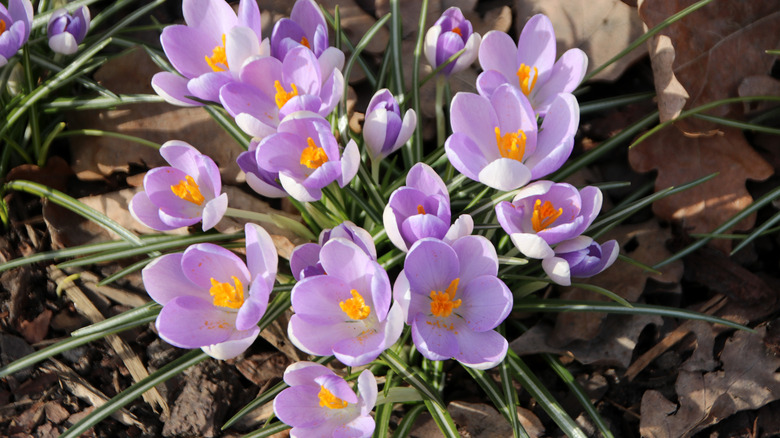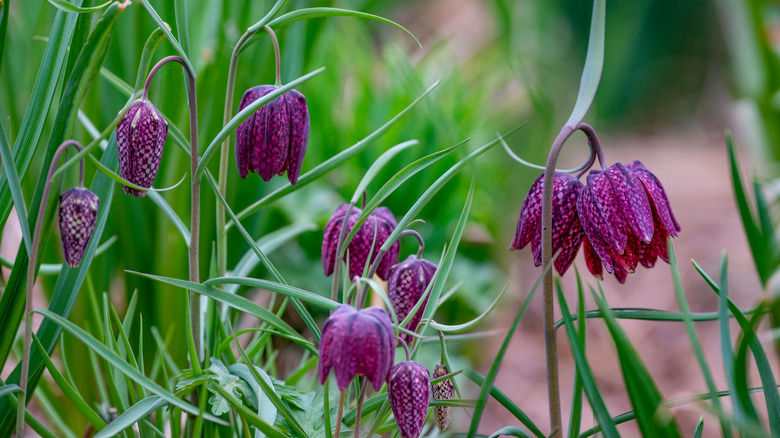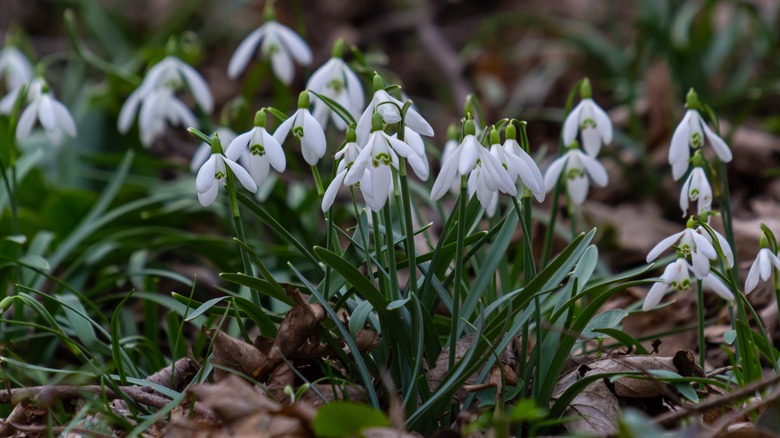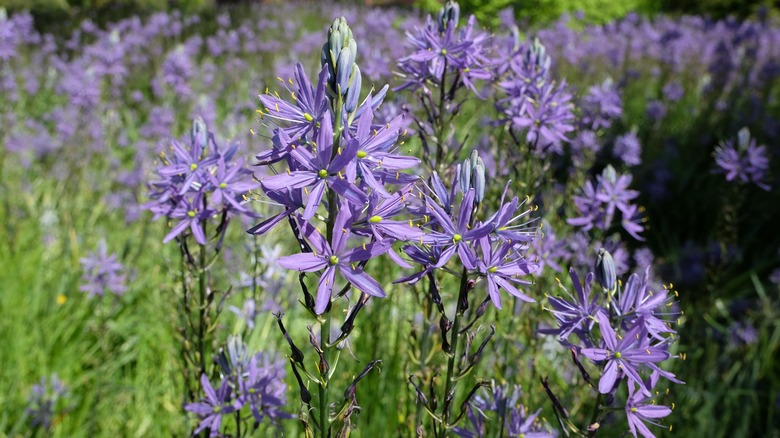Plant These Bulbs During Fall To Create A Pollinator-Paradise For Spring
Every type of pollinator, including bees, wasps, moths, butterflies, birds, beetles, and flies, is essential for the ecosystem. Nearly all fruit and nut crops rely on these creatures. Unfortunately, the population of some common pollinators is declining. Two of the most popular that are also the most vulnerable are bumble bees and monarch butterflies. However, you can play a part in fighting this issue by starting a pollinator garden with easy-to-grow bulbs that should be planted in the fall so they can bloom in the spring.
Wild or heirloom species are best for pollinators, as they have more nectar and pollen than hybridized species, or plants that have been bred from cross-fertilization. These hybridized plants may not have a natural aroma and may have a unique plant structure that limits the kinds of pollinators that can feed from the blooms. Further, cross-fertilized types may not contain any nectar or pollen at all. Daffodils and tulips are popular flowers that sprout from bulbs and are a magnet for nature's helpers, but they aren't the only ones. Plant these eight picks in the fall, and by spring, you'll have a fantastic garden that you'll enjoy and the pollinators will indulge in.
1. Wild daffodils (Narcissus pseudonarcissus)
Butterflies and bees are fond of wild daffodils, also known as lent lilies. These vibrant yellow flowers are low-maintenance and blossom in early to mid spring. For these perennials to flourish, they need partial to full sun and well-drained soil. Wild daffodils favor acidic soil but will grow in alkaline or neutral ground. Early in their growth, they'll need enough water to keep the soil moist, but once the leaves wither, you can reduce watering. The yellow blooms are recommended for hardiness zones 5 to 10 and are stellar in garden beds, planters, and borders. However, the bulbs and plants are poisonous to pets, per the ASPCA.
2. Botanical tulips (Tulipa sylvestris)
Botanical tulips are yellow flowers that are also more than just a pretty sight, as they attract pollinators like bees and hoverflies. These blooms are a stellar choice for rock gardens or grassy land. This wild tulip variety grows best in hardiness zones 4 to 8 and likes lots of direct sunlight, or at six hours of sun. With rich, well-drained soil and medium watering, the petals will open in mid to late spring. However, botanical tulips may irritate your skin, so always wear gloves when planting. The ASPCA says that they're also toxic to pets, so keep them away from your furry friends.
3. Grape hyacinths (Muscari armeniacum)
Grape hyacinth is a low-maintenance plant that lasts longer than the average perennial. The purple cluster blooms in the middle of spring but revitalizes during autumn and can last through mild winters. You can spot bees and butterflies flocking to the nectar in these flowers. Hardiness zones 3 to 9 get the pleasure of this thriving violet beauty. With well-drained soil and at least part sun, the hyacinth will flourish. Plant the perennials in rock gardens or down walkways to benefit pollinators while decorating your yard.
4. Ornamental onions (Alliums)
Want a bulb that's resistant to pests and tolerant to drought and cold weather? Then ornamental onions are the species for you. This flower that has purple spheres of petals is related to culinary onions and shallots but is only used for decorative purposes. It has a pungent smell to some wildlife, keeping the deer and rabbits away but attracting bees and butterflies. You can plant them in containers or use the colorful crowns to line your garden. They are hardy in zones 4 to 10 and prefer well-drained soil with full sun. Gardenia says that these are toxic to cats and dogs, so be cautious.
5. Snow crocus (Crocus tommasinianus)
You can expect snow crocus to bloom at the beginning of spring, around March. Its hurry to sprout is why it's also commonly known as early crocus. The purple and white petals thrive best in hardiness zones 3 to 8, and well-drained soil is a must. Full sun or at least six hours of direct sunlight will ensure the blossom reaches maximum vibrancy, although it will also grow fine in part shade. Crocuses are a favorite for foraging bees, bumble bees, and solitary bees. However, if your pet eats these flowers, they could become sick, per the ASPCA.
6. Checkered lilies (Fritillaria meleagris)
Checkered lilies are a spring beauty. Their pink and white pattern looks hand-painted by Mother Nature herself. The blooms are a magnet for pollinators like birds, flies, wasps, and bees. However, the checkered lily doesn't interest predators like deer or rabbits, so it should thrive in your garden. The Deerfield Veterinary Clinic says that the bulbs can be toxic to pets, so be careful when planting. This perennial is hardy in zones 4 to 8 and prefers rich soil. Full sun is always best, but with at least partial sun, you'll see the colorful petals open in mid to late spring.
7. Snowdrops (Galanthus nivalis)
Snowdrops are early bloomers — their white crown appears as soon as late winter. It is one of the flowering perennials that can withstand frigid temperatures. Hardiness zones 3 to 7 are where these bulbs grow best. Plant the snowdrops in an area that receives at least two to six hours of direct sunlight. The self-seeding flora likes rich, well-drained soil. Its nectar is a favorite of bees and flies, and its seeds are fine snacks for ants. The Pet Poison Helpline says to keep the bulbs away from pets, as they're toxic.
8. Common camas (Camassia quamash)
Bumblebees, mason bees, hoverflies, and beetle pollinators will flock to your garden if you plant common camas. These tall purple flowers with grass-like foliage are a low-maintenance plant that is easy to grow. They need partial to full sun and moist soil. However, they tolerate both wet or dry soil, so don't worry if you miss a few days on your watering schedule. Hardiness zones 4 to 11 are where this perennial thrives. In late spring to early summer, the bluish-purple petals bloom to make both you and your pollinators happy.
